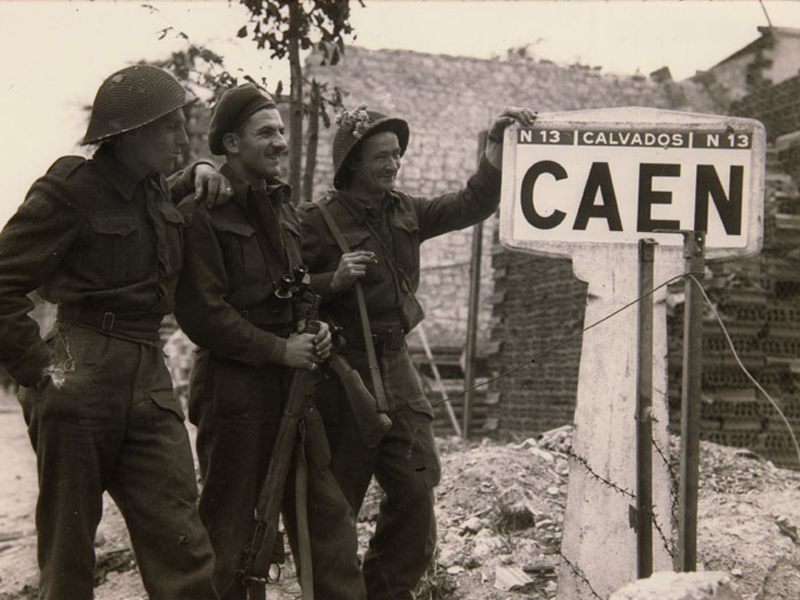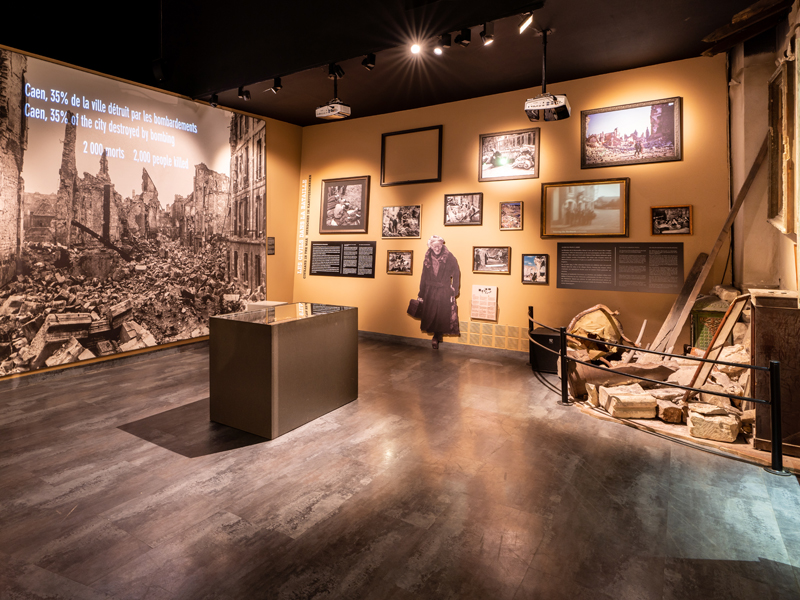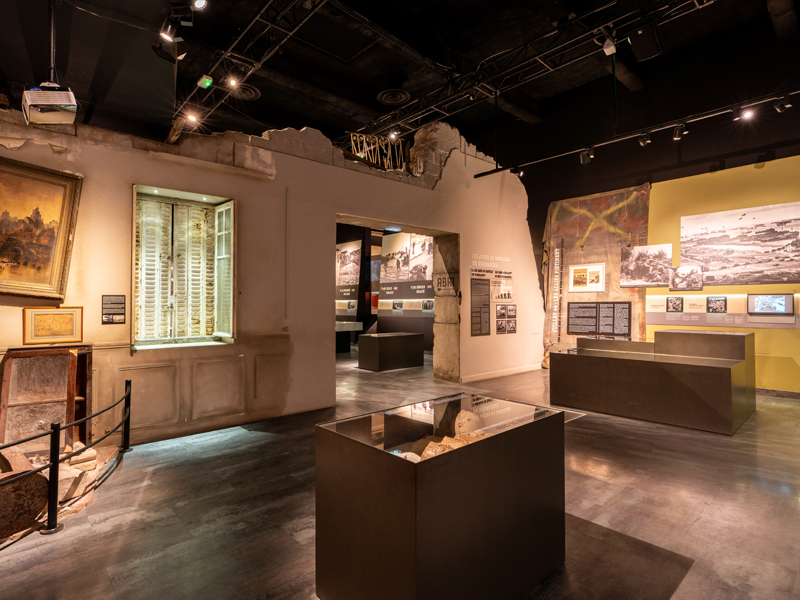
After a month of siege, Montgomery decided to try a frontal attack on Caen in an attempt to break the deadlock.
On the evening of July 7, heavy aerial bombing opened a breach in the German defenses to the north of Caen. The Canadians and British finally entered Caen on July 9. The right bank of the Orne, would not fall for another ten days, however, and the Germans were able to re-establish their lines of defense south of the town and continue to block the road to Falaise.

General Bradley put the finishing touches to a plan for getting his troops out of “the hell of the hedgerows”.
Operation Cobra was launched on July 25, with massive aerial bombardment to the west of Saint-Lô that opened up a passageway through enemy lines. The armored divisions swept into the breach and overran the Germans, who were severely weakened after weeks of fighting and had no more in-depth defenses left able to stave off the assault. The front cracked from end to end and the Americans forged ahead with dazzling speed. In six days, they advanced 60 kilometers and entered Avranches on July 30, before taking the fight on into Brittany under Patton’s leadership.

In mid-August, the success of Operation Cobra and the failure of the rash counterattack launched in Mortain on Hitler’s orders gave General Bradley the idea of carrying out a vast encircling maneuver.
Forced to fight on the run, the German armies were rapidly caught between two pincers (Anglo-Canadian to the north and American to the south), which inexorably closed upon them. Relentlessly pounded by aircraft and artillery, the pocket grew smaller by the day, finally closing once and for all on August 21, near the village of Chambois.